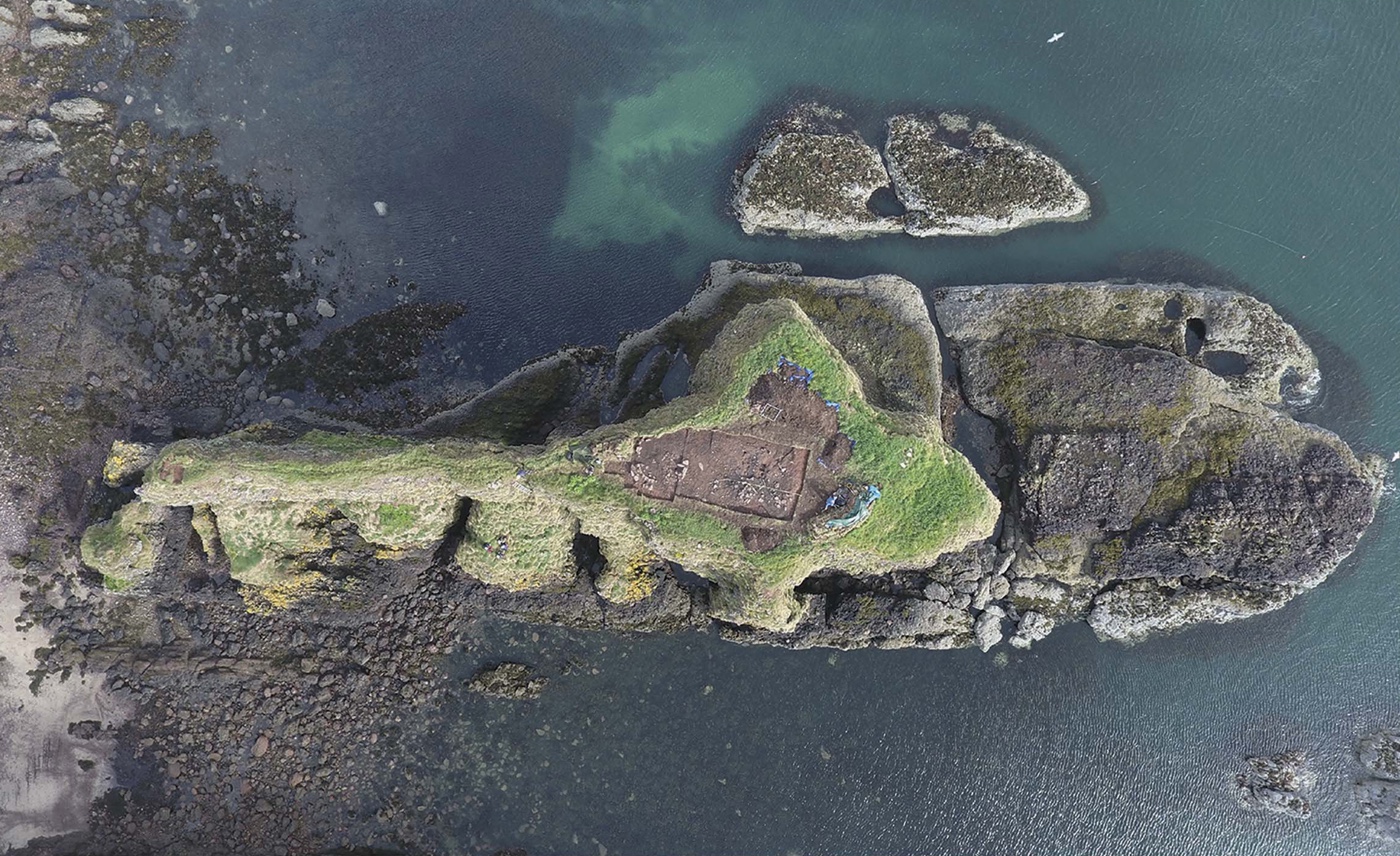'Painted People' in Scotland Developed Written Language 1,700 Years Ago

The Picts, a fierce group of people who lived in Scotland during ancient and medieval times, may have developed their own written language about 1,700 years ago, according to results from new excavations.
The Picts (which means "Painted People" for their distinctive tatoos and war paint) are part of the reason the Roman Empire was never able to conquer Scotland. Every time the Romans tried to invade, the Picts and other Scotland inhabitants drove the would-be conquerors back. At times the Picts went on the offensive, attacking Roman-controlled England, forcing the Romans to send legions to try to beat attackers back. Roman accounts of the Picts sometimes describe them as a fierce people who had numerous tattoos and practiced polyamory.
However, while the Picts were often in conflict with the Romans, new research published today (Oct. 26) in the journal Antiquity, suggests that these people may have gotten the idea for a written language from the Romans. [The 25 Most Mysterious Archaeological Finds on Earth]
The language is based on a series of symbols the Picts carved on stone, bone, metalwork and other artifacts.
"In the last few decades, there has been a growing consensus that the symbols on these stones are an early form of language," Gordon Noble, head of archaeology at the University of Aberdeen in the United Kingdom and the senior author of the Antiquity paper, said in a statement.
However, until now, it's been unclear when or how this language developed, with some scholars believing it was invented during the Middle Ages, after the Romans left Britain.
To solve this riddle, scientists with the Northern Picts Project conducted new excavations at archaeological sites where stones with Pictish symbols had been discovered in the past.
Get the world’s most fascinating discoveries delivered straight to your inbox.
At one of these sites, called Dunnicaer, scientists had previously found the remains of a fort, which, in addition to protecting people who lived at the site, may have acted "as a spring pad for raids by sea — perhaps on the Roman frontier," Noble told Live Science.
In the new study, the researchers found that the fort was in use between the second and fourth centuries A.D. That suggested that the Pictish stones, which were found near the fort's rampart wall during the 19th century, also date to that time, the scientists wrote in their paper.
The researchers also studied a wooden enclosure found at another Pictish site, called Rhynie, where stone symbols have been found. New dating of the enclosure revealed that the site was in use between the fourth and sixth centuries A.D., the scientists wrote. (The researchers created a virtual reconstruction of part of Rhynie, which can be viewed in a video posted online.)
Based on their research, the scientists concluded that the Pictish language was likely developed in the third or fourth century A.D., and it may have been inspired, to a degree, by the Romans, who also used a writing system at the time. However, rather than using Latin (the language of the Romans), the Picts developed a writing style that was quite different from that language, the scientists noted in their study.
The scientists also noted that around the time that the Picts developed their language, a writing system known today as Runes was developed in Scandinavia and parts of Germany. Another system, known as Ogham, emerged in Ireland.
The Romans never conquered Ireland, Scandinavia or Germany, but the empire had contact with those populations through trade or conflict. Contacts with the Romans and other people in the Mediterranean who had a writing system may also have inspired people living in those areas to create their own writing systems, the scientists noted.
"As with Runes and Ogham, the Pictish symbols were also probably created beyond the frontier in response to Roman literacy," the researchers wrote.
It is unlikely that Pictish will be deciphered, unless a text written in both Pictish and a known language is discovered, Noble told Live Science. "I guess something like that could be found, but [that] will rely on further excavations," Noble said.
Originally published on Live Science.

Owen Jarus is a regular contributor to Live Science who writes about archaeology and humans' past. He has also written for The Independent (UK), The Canadian Press (CP) and The Associated Press (AP), among others. Owen has a bachelor of arts degree from the University of Toronto and a journalism degree from Ryerson University.



